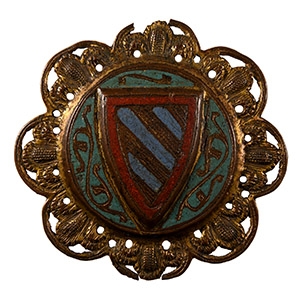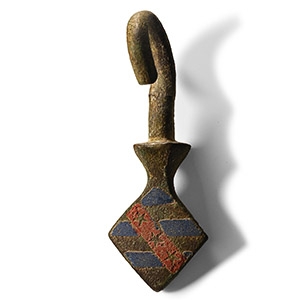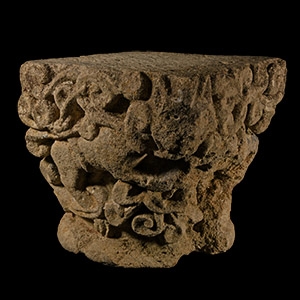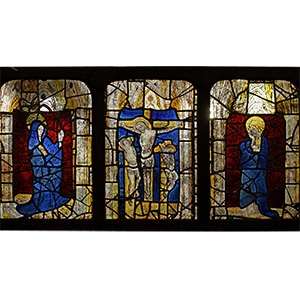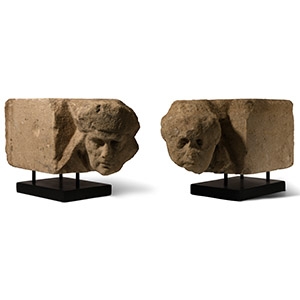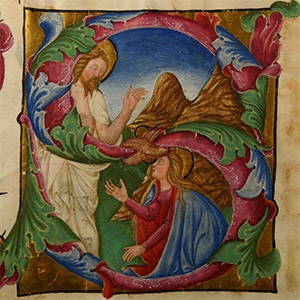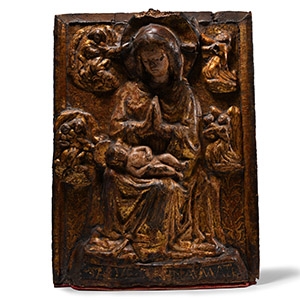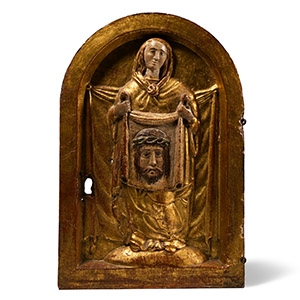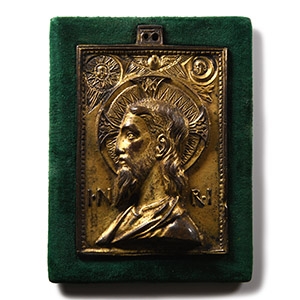Home > Auctions > 4 June - 8 June 2024
Ancient Art, Antiquities, Natural History & Coins
Auction Highlights:
Private collection, Paris, France.
with Pierre-Richard Royer, 2006.
Ex private collection, Suffolk, UK.
This lot has been checked against the Interpol Database of stolen works of art and is accompanied by a search certificate number no.12148-217468.
Found Grimsby, UK.
From an East Anglian private collection.
The arms to the obverse are similar to those of Richard de Valoines (barry of six azure and or, a bend gules).
From the estate of Lloyd and Margit Cotsen, 2023.
Ex central London gallery.
This lot has been checked against the Interpol Database of stolen works of art and is accompanied by a search certificate number no.12147-217458.
Private collection in Bordeaux.
with Pierre Berge, 29 November 2017, no.7.
This lot has been checked against the Interpol Database of stolen works of art and is accompanied by a search certificate number no.12146-217446.
Collection of Philip Kohler, Normandy, France, acquired by his parents in 1950s-1960s.
Acquired from the above, 2009.
Ex private collection, Suffolk, UK.
This lot has been checked against the Interpol Database of stolen works of art and is accompanied by a search certificate number no.12150-217449.
Believed to be from a building in the West Country, UK.
Acquired from Lichen Garden Antiques, Oxfordshire, UK, in 2012.
Property of a Kent collector.
The cap similar to the style worn by Thomas Cromwell in the portrait by Hans Holbein the Younger in the Frick Collection, New York, Accession no.1915.1.76.
Private collection, Tuscany, inherited, 1969.
This lot has been checked against the Interpol Database of stolen works of art and is accompanied by a search certificate number no.12060-217464.
Cf. miniature of God blessing David, in the Graduale G 73, Museum of Bargello, Firenze, folio 2r, early 15th century, for similar.
The illumination is from a cutting of dismembered Code, likely representing a book of the ancient Testament. It is difficult to say who is the character to which God is appearing, although his costume betrays the intention to represent a grieving man, in Jewish garb. This points to a possible individuation of the man as David (an interpretation supported by the letter D), who, penitent in front of God for the sin he committed by killing Uriah, receives the blessing and forgiveness of God, whose hand is depicted in the blessing gesture.
Private collection, Tuscany, inherited, 1969.
This lot has been checked against the Interpol Database of stolen works of art and is accompanied by a search certificate number no.12059-217465.
Cf. similar in Tóvizi Á., 'Some newly discovered Quattrocento illuminations in Székesfehérvár', in Arte cristiana, 96 (2008), pp.307-12.
The illumination is from a cutting of dismembered codex, likely representing a book of the Old Testament. In 15th century North Italy there were proficient artists realising images on vellum, like the Master of Murano Gradual (active between 1430-1460). The miniature represents an Eastern Prophet, dressed with turban and long coat, maybe Ezekiel, or Abacuc, or even Moses, a prophet linked with the prophecies related to the Messiah.
Private collection, Barcelona, 2022.
Ex central London gallery.
This lot has been checked against the Interpol Database of stolen works of art and is accompanied by a search certificate number no.12151-217463.
German private collection, 2019.
Ex central London gallery.
This lot has been checked against the Interpol Database of stolen works of art and is accompanied by a search certificate number no.12056-217445.
Cf. similar relief in Metropolitan Museum, accession no.1974.126.4, from North-Italy, 15th century in Castelnuovo-Tedesco, L. and Soultanian, J., Italian Medieval Sculpture in The Metropolitan Museum of Art and The Cloisters, New York: The Metropolitan Museum of Art, 2010, no.51, pp.255–259.
Like all the ancient and medieval statues, this artwork was also originally lavishly painted and most of the colours are still visible with gold and red and light blue being the main colours used for Saint Mary. Interestingly, the inscription recalls the three first words of the Cluny prayer to the Virgin Mary: SALVE REGINA, MATER MISERICORDIAE (Hail Holy Queen Merciful Mother), used by the Templars as a war song.
Private collection, Bonn, Germany.
This lot has been checked against the Interpol Database of stolen works of art and is accompanied by a search certificate number no.12057-217471.
See the ‘Way to the Calvary’, Netherlands circa 1510, The Metropolitan Museum of Art, New York, accession no.15.12; in Fogg., S., Medieval Faces, London, 2020, fig.32 (Saint Veronica and the Mandylion).
The sudarium or 'veil of Veronica' (or Mandylion of Edessa) is alleged to bear the image of Christ's face. The story of the image's origin refers to the sixth Station of the Cross, where Saint Veronica met Jesus along the Via Dolorosa to Calvary and wiped the blood and sweat from his face with her veil. She later travelled to Rome to present the cloth to the Roman Emperor Tiberius. The veil has been said to have healing properties.
with Pierre-Richard Royer, 2010.
Ex central London gallery.
Cf. Strong, R., 600 Years of British Painting: the Berger Collection an the Denver Art Museum, Exhibition catalogue, Denver, 1999, for history of the artefact; for a similar icon see a plaque in the Walters Art Museum, accession no.54.68.
The icon represents the profile bust of Christ found on a Byzantine emerald, whence it is known as an 'Emerald Icon'. The emerald was one of the several holy objects sent to Pope Innocent VIII in the 1490's by the Turkish Sultan Bajazet II. The icon was considered one of the Christianity's most precious relics. The letters "I N R I" stand for 'Iesus Nazarenus Rex Iudaeorum,' i.e.' Jesus of Nazareth, King of the Jews' This is the inscription that, according to the Evangelist John, Pilate had written on the plaque above Christ's head on the cross. The sun and moon allude to the cosmic significance of his sacrifice.
241 - 252 of 2809 LOTS

.jpg)

.jpg)
.jpg)
.jpg)
